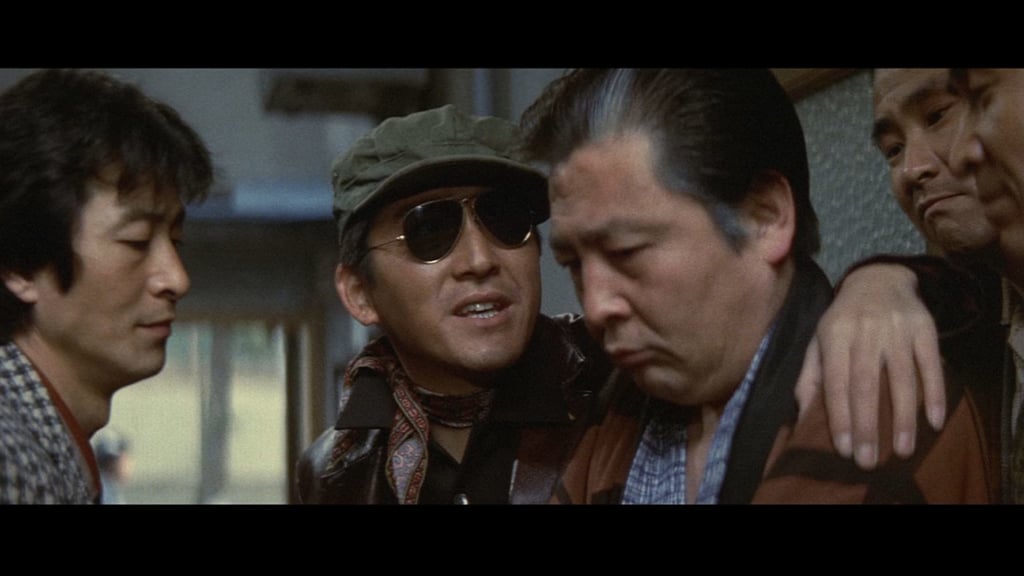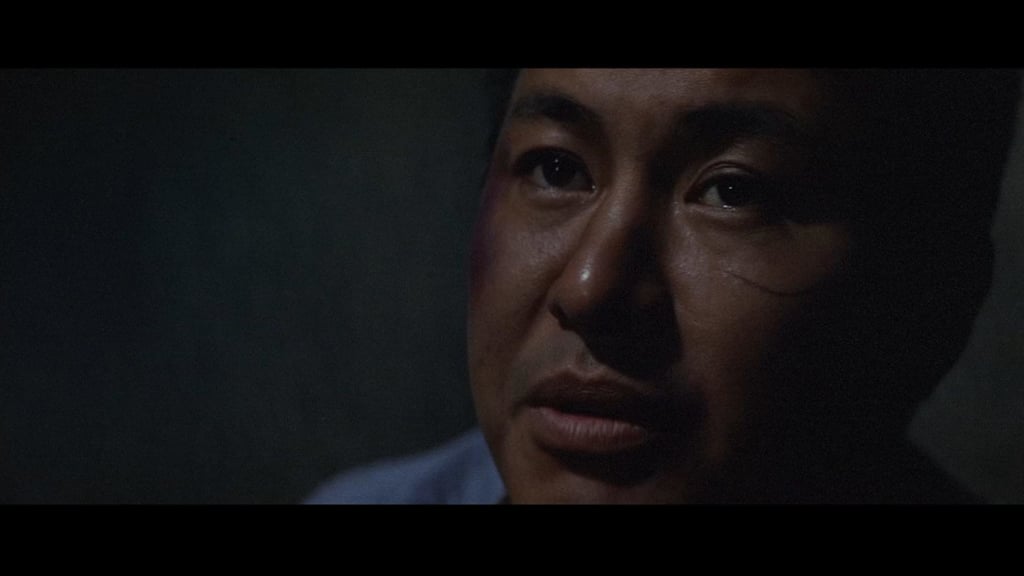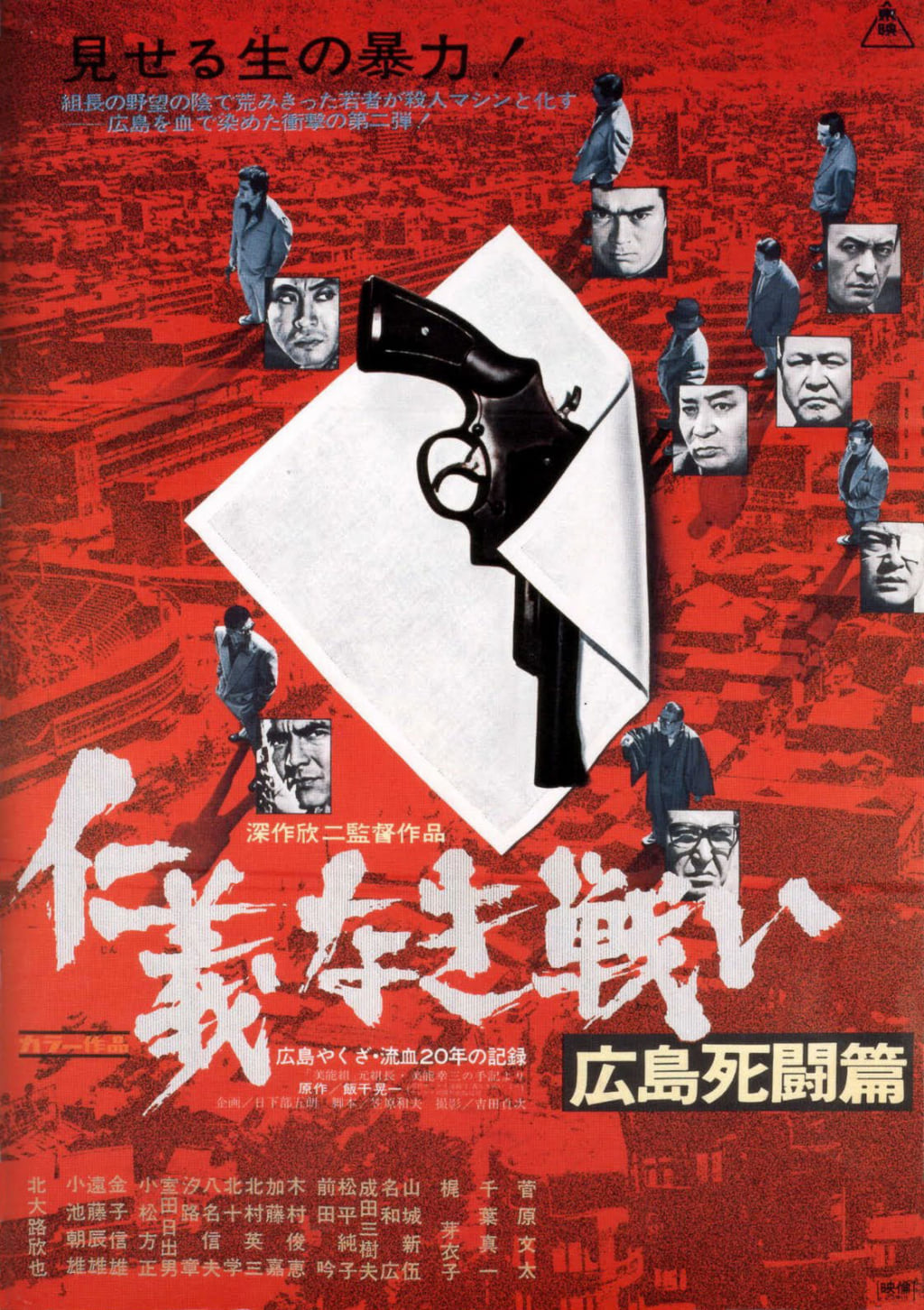A Yakuza Film that Revitalised the Genre
Directed by Kinji Fukasaku, 'Battles Without Honour and Humanity' was the first film to depict these criminals bent on violence.

Image taken from the film 'Battles Without Honour and Humanity'
In 1973, Battles Without Honour and Humanity was released, a film by Kinji Fukasaku and the first in a series of five in which the director presents the world of the yakuza in post-war Japan. This opus is based on a true story, adapted from the writings of Koichi Iiboshi, a renowned journalist for the national newspaper Yomiuri Shimbun.
Battles Without Honour and Humanity marks a break with previous Japanese films in which mafia clans occupied the screen. This is no longer about the heirs to the samurai code, concerned with questions of honour and duty. Kinji Fukasaku, also known for having directed Battle Royale, initiated what is known as the jitsuroku eiga genre. These almost documentary-style films are often inspired by true stories and depict murderous yakuza, hungry for revenge.
A directorial style that follows the actors’ movements closely
The film examines the emergence of new yakuza in the city of Hiroshima after Japan’s capitulation during World War Two. The viewer follows Shozo Hirono, Masakichi Makihara, and Tetsuya Sakai, all members of the Yamamori clan, headed by Yoshio Yamamori, a manipulator who does not hesitate to make his rivals disappear. The plot, driven by a directorial style that follows the actors’ movements closely, reveals the connections between politicians, mafia gangs, police, and small-time criminals.
Kinji Fukasaku’s camera gets close to bodies and films scenes of graphic violence, making the viewer an almost omniscient character in this suffocating universe. He offers a few moments of respite, however, through still, contemplative frames, held dear by Japanese cinema. All of this is supplemented by a voiceover that narrates the events as they occur.
This first part of the saga was followed by four other films that continue this examination of the world of the Japanese mafia in a country in constant evolution and in a tense international context: the Cold War, the Japanese economic takeoff, the Olympic Games… The Battles Without Honour and Humanity saga follows the timeline to conclude on a note that shows no mercy for the yakuza. The 1970s marked a tipping point for the criminal underworld as the previously established codes and customs gradually dissolved to make way for a new generation who were less attached to the ways of their elders.
Battles Without Honour and Humanity (1973), a film by Kinji Fukasaku, was released on DVD by Arrow Video.

Image taken from the film 'Battles Without Honour and Humanity'

Original film poster for 'Battles Without Honour and Humanity'
TRENDING
-
A House from the Taisho Era Reveals Its Secrets
While visiting an abandoned building, Hamish Campbell discovered photographs the owner had taken of the place in the 1920s.

-
The Taboo-Breaking Erotica of Toshio Saeki
The master of the 1970s Japanese avant-garde reimagined his most iconic artworks for a limited box set with silkscreen artist Fumie Taniyama.

-
With Meisa Fujishiro, Tokyo's Nudes Stand Tall
In the series 'Sketches of Tokyo', the photographer revisits the genre by bringing it face to face with the capital's architecture.

-
Masahisa Fukase's Family Portraits
In his series ‘Family’, the photographer compiles surprising photos in which he questions death, the inescapable.

-
Hajime Sorayama's Futuristic Eroticism
The illustrator is the pioneer for a form of hyperrealism that combines sensuality and technology and depicts sexualised robots.





